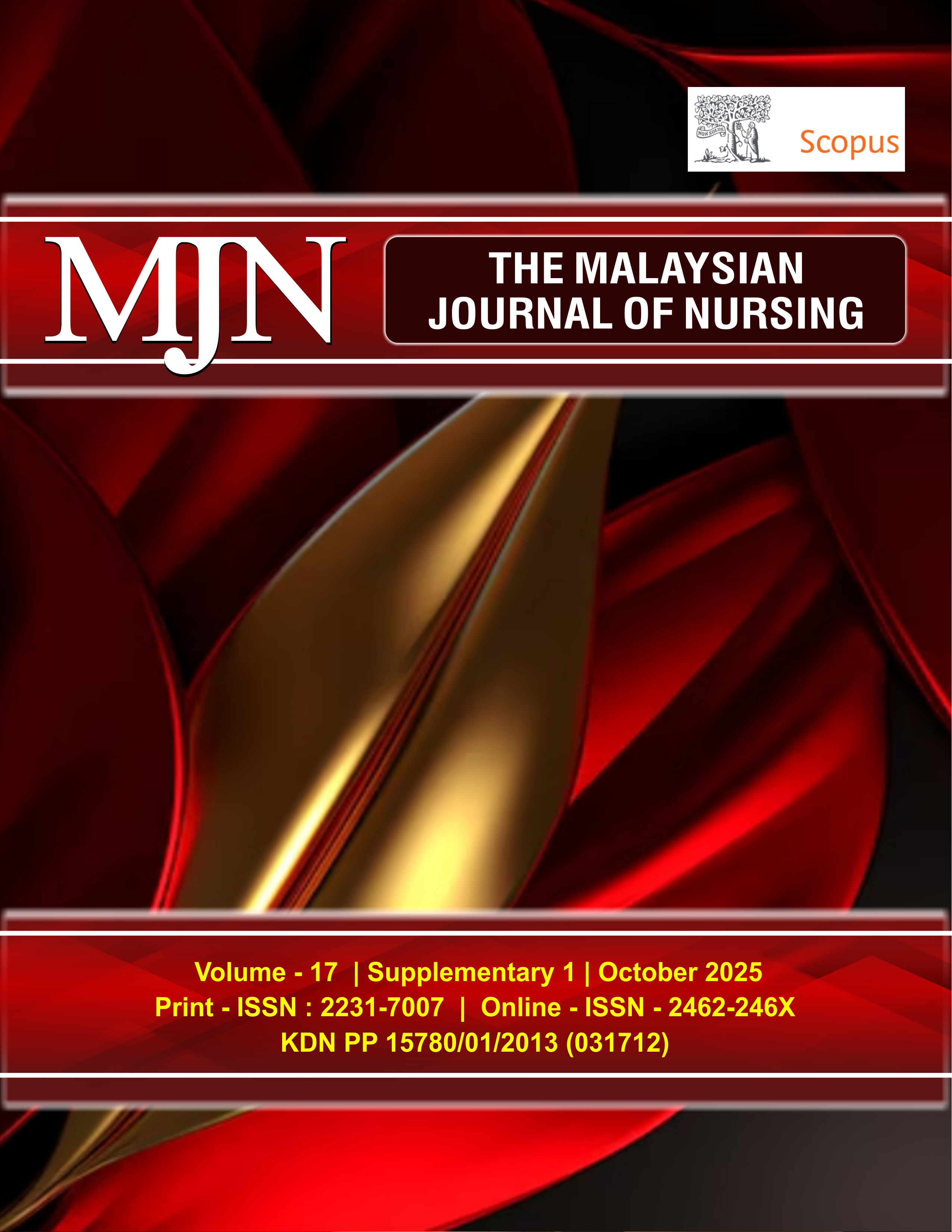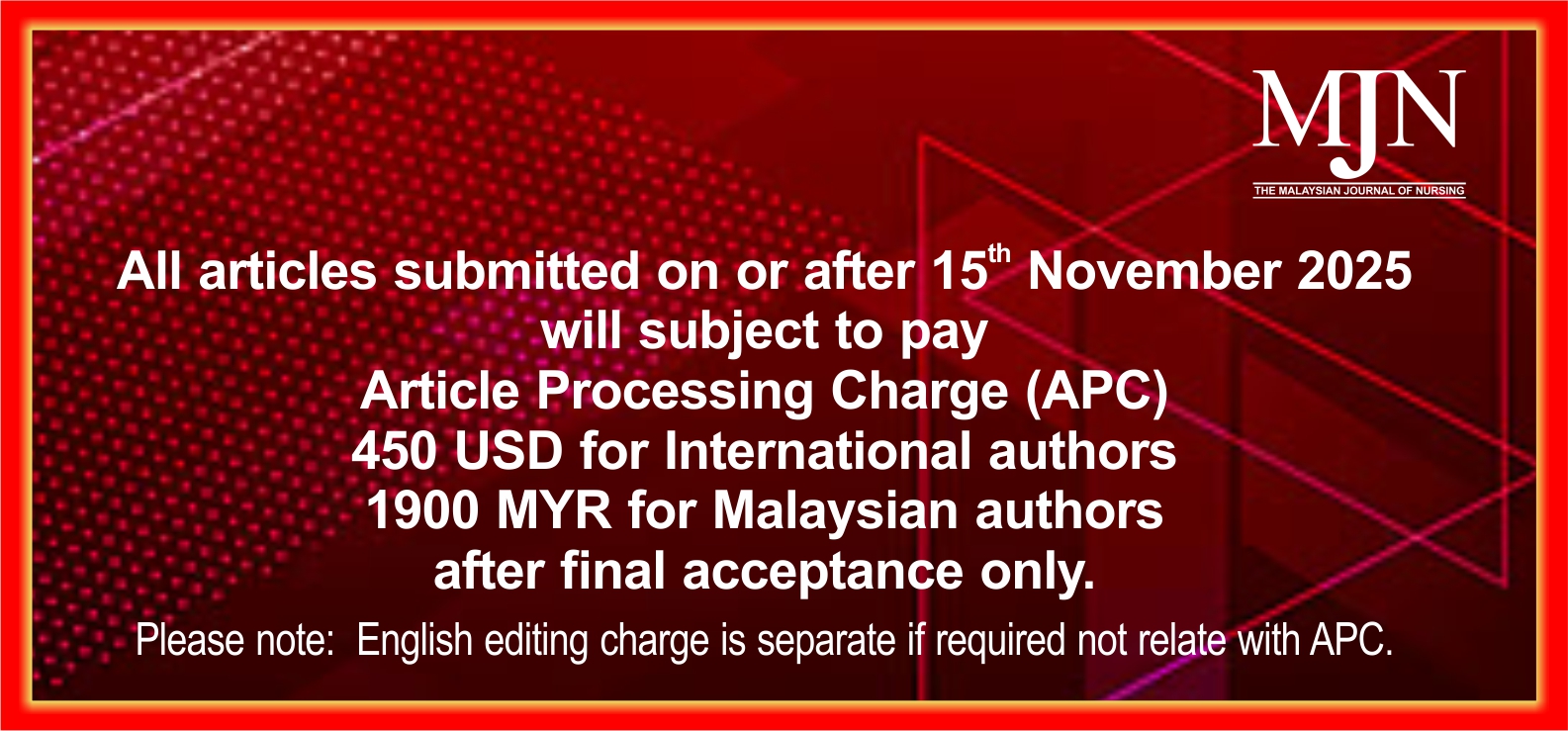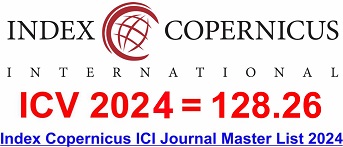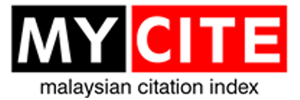Disaster Awareness, Preparedness, Participation, and Nursing Competency in Indonesian Public Health Nurses
DOI:
https://doi.org/10.31674/mjn.2025.v17isupp1.002Abstract
Background: Public health nurses are vital to disaster response and preparedness efforts, yet their competencies in these areas remain underexplored. Understanding the factors influencing nurse competency such as disaster awareness, preparedness, and community participation is crucial to enhancing community resilience during emergencies. Objective: This study aimed to evaluate and identify the predictors of disaster awareness, preparedness, community participation, and nursing competency among public health nurses in Indonesia. Methods: A cross-sectional descriptive study was conducted from June to August 2024 involving 300 public health nurses working in community health centres across Indonesia. Data were collected using validated instruments: Disaster Preparedness Evaluation Tool (DPET), Public Health Emergency Preparedness Survey (PHEPS), Community Emergency Preparedness Participation Scale (CEPPS), and Disaster Nursing Competency Scale (DNCS). Descriptive statistics, Pearson correlation, and multiple regression analyses were performed. Results: The majority of participants were female (88.3%), aged 31–40 years (42.7%), held a bachelor’s degree (68.7%), and had more than five years of public health nursing experience (54.3%). Regression analysis revealed that disaster awareness (β = 0.32, p < 0.001), preparedness (β = 0.36, p < 0.001), and community participation (β = 0.31, p < 0.001) were significant predictors, explaining 47.8% of the variance in nursing competency. Conclusion: Disaster awareness, preparedness, and community participation significantly influence nursing competency among Indonesian public health nurses. These findings underscore the need to integrate disaster-related education and community engagement into nursing training programs, emphasizing tailored approaches for resource-limited settings.
Keywords:
Disaster Awareness, Disaster Preparedness, Community Participation, Nursing Competency, Public Health NursesDownloads
References
Abuadas, M. H., & Albikawi, Z. F. (2022). Predictors of disaster preparedness among registered nurses in Saudi Arabia: A structural equation modelling analysis. Australasian Emergency Care, 25(2), 132–139. https://doi.org/10.1016/j.auec.2021.07.004
Achora, S., & Kamanyire, J. K. (2016). Disaster preparedness: Need for inclusion in undergraduate nursing education. Sultan Qaboos University Medical Journal, 16(1), e15–e19. https://doi.org/10.18295/squmj.2016.16.01.004
Al Harthi, M., Al Thobaity, A., Al Ahmari, W., & Almalki, M. (2020). Challenges for nurses in disaster management: A scoping review. Risk Management and Healthcare Policy, 13, 2627–2634. https://doi.org/10.2147/RMHP.S279513
Al Khalaileh, M. A., Bond, E., & Alasad, J. A. (2012). Jordanian nurses’ perceptions of their preparedness for disaster management. International Emergency Nursing, 20(1), 14–23. https://doi.org/10.1016/j.ienj.2011.01.001
Al Thobaity, A., Plummer, V., & Williams, B. (2017). What are the most common domains of the core competencies of disaster nursing? A scoping review. International Emergency Nursing, 31, 64–71. https://doi.org/10.1016/j.ienj.2016.10.003
Alexandraki, I., Rosasco, R. E., & Mooradian, A. D. (2021). An evaluation of faculty development programs for clinician–educators: A scoping review. Academic Medicine, 96(4), 599–606. https://doi.org/10.1097/ACM.0000000000003813
Almarwani, A. M., & Alzahrani, N. S. (2023). Factors affecting the development of clinical nurses' competency: A systematic review. Nurse Education in Practice, 73, 103826. https://doi.org/10.1016/j.nepr.2023.103826
Aluisio, A. R., Daniel, P., Grock, A., Freedman, J., Singh, A., Papanagnou, D., & Arquilla, B. (2016). Case-based learning outperformed simulation exercises in disaster preparedness education among nursing trainees in India: A randomized controlled trial. Prehospital and Disaster Medicine, 31(5), 516–523. http://dx.doi.org/10.1017/S1049023X16000789
Chegini, Z., Arab‐Zozani, M., Kakemam, E., Lotfi, M., Nobakht, A., & Aziz Karkan, H. (2022a). Disaster preparedness and core competencies among emergency nurses: A cross‐sectional study. Nursing Open, 9(2), 1294–1302. https://doi.org/10.1002/nop2.1172
Elendu, C., Amaechi, D. C., Okatta, A. U., Amaechi, E. C., Elendu, T. C., Ezeh, C. P., & Elendu, I. D. (2024). The impact of simulation-based training in medical education: A review. Medicine, 103(27). https://doi.org/10.1097/MD.0000000000038813
Etkin, D. (2014). Disaster theory: An interdisciplinary approach to concepts and causes. Butterworth-Heinemann. Retrieved from: https://www.academia.edu/64895695/Disaster_Theory_An_Interdisciplinary_Approach_to_Concepts_and_Causes. Accessed on 24th March, 2024.
Feng, J., Zhang, C., Fang, S., Zhao, R., Wang, H., & Li, D. (2025). Influencing factors of nurses’ disaster preparedness: a systematic review and meta-analysis. BMC Public Health, 25(1), 2673. https://doi.org/10.1186/s12889-025-23981-w
Gundran, C. P. D., Lam, H. Y., Tuazon, A. C. A., Cleofas, J. V., Garcia, F. B., Puli, T. E. M., & Magdales, M. S. I. (2022). Enhancing mass casualty disaster management competencies through an integrated disaster simulation training program. International Journal of Disaster Risk Reduction, 78. https://doi.org/10.1016/j.ijdrr.2022.103124
Guraya, S. Y., & Chen, S. (2019). The impact and effectiveness of faculty development program in fostering the faculty’s knowledge, skills, and professional competence: A systematic review and meta-analysis. Saudi Journal of Biological Sciences, 26(4), 688–697. https://doi.org/10.1016/j.sjbs.2017.10.024
Hamdi, A., & Al Thobaity, A. (2023). Enhancing disaster triage competencies through simulation-based training: An interventional study among undergraduate nursing students. Sustainability, 15(21). https://doi.org/10.3390/su152115513
Hasan, M. K., Younos, T. B., & Farid, Z. I. (2021). Nurses' knowledge, skills and preparedness for disaster management of a megapolis: Implications for nursing disaster education. Nurse Education Today, 107. https://doi.org/10.1016/j.nedt.2021.105122
Hasheesh, M. O. A. (2023). Jordanian nurses' perceived disaster preparedness: Factors influencing successful planning. The Scientific World Journal, 2023(1). https://doi.org/10.1155/2023/5473777
Kako, M., & Hutton, A. (2023). Disaster preparedness of Hiroshima community health nurses: A mixed-method study. Progress in Disaster Science, 20. https://doi.org/10.1016/j.pdisas.2023.100295
Kamal, A. (2013). A comparative study of knowledge regarding emergency care during disaster between community health volunteers working in tsunami-affected and non-affected areas in Aceh Province, Indonesia. Idea Nursing Journal, 4(2). http://dx.doi.org/10.14710/nmjn.v4i2.8382
Khairina, I., & Maisa, E. A. (2023). Self-efficacy and nurses’ disaster competency in disaster preparedness management. Malaysian Journal of Medicine & Health Sciences, 19(3). https://doi.org/10.47836/MJMHS.19.3.40.
Labrague, L. J., & Hammad, K. (2024). Disaster preparedness among nurses in disaster-prone countries: A systematic review. Australasian Emergency Care, 27(2), 88–96. http://dx.doi.org/10.1016/j.auec.2023.09.002
Labrague, L. J., Hammad, K., Gloe, D. S., McEnroe‐Petitte, D. M., Fronda, D. C., Obeidat, A. A., Leocadio, M. C., Cayaban, A. R., & Mirafuentes, E. C. (2018). Disaster preparedness among nurses: A systematic review of literature. International Nursing Review, 65(1), 41–53. https://doi.org/10.1111/inr.12369
Martono, M., Satino, S., Nursalam, N., Efendi, F., & Bushy, A. (2019). Indonesian nurses’ perception of disaster management preparedness. Chinese Journal of Traumatology, 22(1), 41–46. https://doi.org/10.1016/j.cjtee.2018.09.002
McCabe, O. L., Barnett, D. J., Taylor, H. G., & Links, J. M. (2010). Ready, willing, and able: A framework for improving the public health emergency preparedness system. Disaster Medicine and Public Health Preparedness, 4(2), 161–168. https://doi.org/10.1001/dmp-v4n2-hcn10003
Said, N. B., & Chiang, V. C. L. (2020). The knowledge, skill competencies, and psychological preparedness of nurses for disasters: A systematic review. International Emergency Nursing, 48. https://doi.org/10.1016/j.ienj.2019.100806
Safyaan, H., Ibrahim, K., Afriandi, I., Herawati, E., & Nugroho, W. H. S. (2022). The need for a preparedness training model on disaster risk reduction based on culturally sensitive public health nursing (PHN). International Journal of Environmental Research and Public Health, 19(24). https://doi.org/10.3390/ijerph192416467
Songwathana, P., & Timalsina, R. (2021). Disaster preparedness among nurses of developing countries: An integrative review. International Emergency Nursing, 55. https://doi.org/10.1016/j.ienj.2020.100955
Su, Y., Wu, X. V., Ogawa, N., Yuki, M., Hu, Y., & Yang, Y. (2022). Nursing skills required across natural and man‐made disasters: A scoping review. Journal of Advanced Nursing, 78(10), 3141–3158. https://doi.org/10.1111/jan.15337
Susanti, H., Hamid, A. Y. S., Putri, A. F., Setiawan, A., Frida, A., & Fadilah, R. (2023). Disaster training for nurses in Indonesia: Balancing physical, psychological, and managerial competencies. The Journal of Continuing Education in Nursing, 54(8), 378–384. https://doi.org/10.3928/00220124-20230711-08
Tas, F., & Cakir, M. (2022). Nurses’ knowledge levels and preparedness for disasters: A systematic review. International Journal of Disaster Risk Reduction, 80. https://doi.org/10.1016/j.ijdrr.2022.103230
Veenema, T. G., Griffin, A., Gable, A. R., MacIntyre, L., Simons, R. N., Couig, M. P., Walsh, J. J., Lavin, R. P., Dobalian, A., & Larson, E. (2016). Nurses as leaders in disaster preparedness and response—A call to action. Journal of Nursing Scholarship, 48(2), 187–200. https://doi.org/10.1111/jnu.12198
Winarti, W., & Gracya, N. (2023). Exploring nurses’ perceptions of disaster preparedness competencies. Nurse Media Journal of Nursing, 13(2), 236–245. https://doi.org/10.14710/nmjn.v13i2.51936
Published
How to Cite
Issue
Section
License
Copyright (c) 2025 The Malaysian Journal of Nursing (MJN)

This work is licensed under a Creative Commons Attribution-NonCommercial-NoDerivatives 4.0 International License.



































